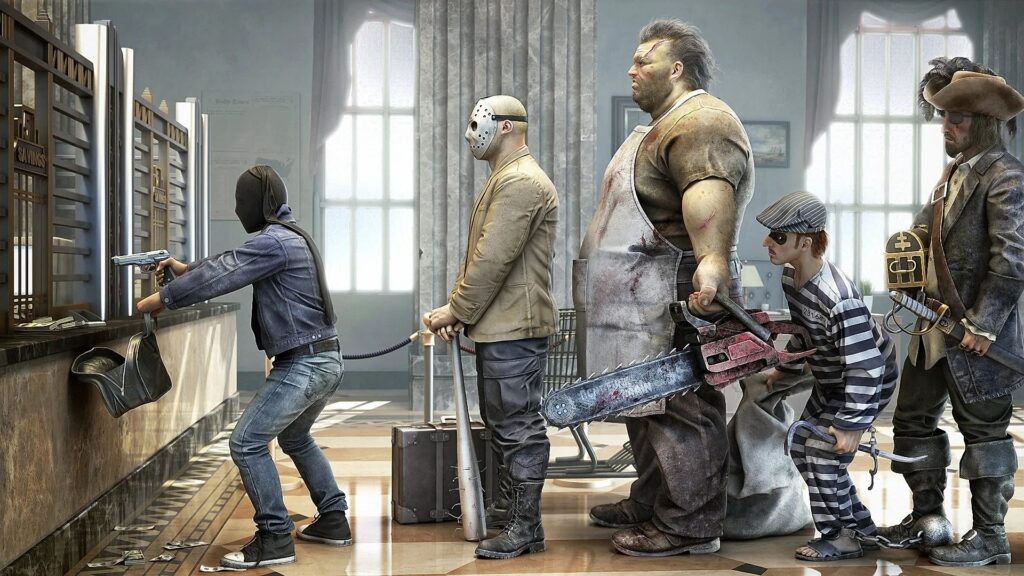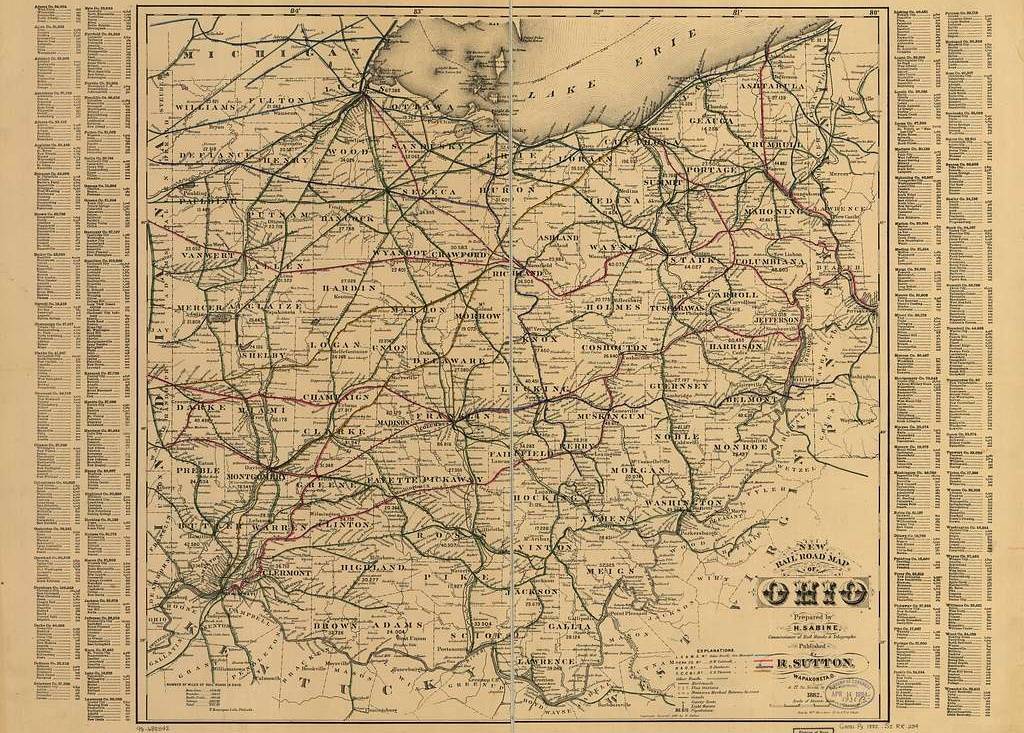Sometimes, it seems like “Ohio” and “Crime” go together like bread and butter. Or, bread and jam for the lactose intolerant. Or, apples and caramel for the lactose intolerant and gluten-free with a peanut allergy population. Whatever – you get the analogy. Throughout the history of the state, we seem to have seen just about everything – from unsolved serial killers (The Mad Butcher of Kinsbury Run) to being noted as the birthplace of Dahmer, Manson, among others. We’ve seen notorious gangsters, from The Black Hand of the early 1800s to the street gangs of today.
But, for this story, we’re going to talk about a bank robbery. A crime so simple that it took authorities fifty two years to solve the thing.
Who Was Theodore John Conrad?
On July 11, 1969, Teddy or Ted Conrad was a 20 year (and one day) old living in Cleveland, Ohio. He had been born in Denver, Colorado, but after his parents divorce when he was still a small kid, his mother moved him to Ohio where he remained … at least, until he didn’t. But, we’ll get to that shortly.
Most of the people who knew him described him as a likable young man, somewhat intelligent, friendly, with an affable sense of humor. That day, he showed up to work with a paper grocery sack. Inside, he showed his coworkers a bottle of whiskey and a carton of Marlboro cigarettes. At the time people just assumed that since it had just been his birthday the day before, and there was nothing ominous with any of this, Ted was such a hard worker and respectable chap, why shouldn’t he get to celebrate. It was a Friday, after all, the weekend was about to start.
When Ted left for work at the end of the day, nobody noticed that anything was off. Nobody questioned why he was leaving work with a paper sack, everyone just assumed all it contained was the whiskey and cigarettes. Nobody had a reason to check his bag. If they had, they would have discovered two hundred and fifteen dollars in cash that he had stolen. Unfortunately, the theft wasn’t discovered until Monday morning, and after Ted failed to show up for work, it didn’t take them all that long to figure out what had happened.
The only person who has admitted to seeing Ted after he left work (and we have no reason to think anybody is lying) on Friday was his landlady. She observed him getting into a taxi and telling the driver he needed to go to the Cleveland airport.
The authorities were notified on Monday afternoon, and by the time the manhunt had begun, Ted could have been literally anywhere – after all he had a several days head start.
There had never been any question that Ted had embezzled the money from the bank. On the day in question, the bank manager had been off-duty and placed Ted in charge of The Vault and making sure all the money went out to the various branches as it was supposed to. In other words, nobody but Ted could have pulled this off.
The paper grocery sack was another obvious clue, at least after the fact. That Ted showed up to work with the bag, made sure people were aware it was his birthday and how the bag only contained cigarettes and booze suggested not only that Ted was the culprit, but this bank heist took some planning, insider knowledge, and wasn’t a spur of the moment thing. And, again, it could have only been Ted.
The Mystery of Ted Conrad
Immediately following the robbery and Ted Conrad’s disappearance – two mysteries above all others seemed to be at the forefront of everyone’s mind.
- Why did Ted steal a ton of money?
- Where is Ted now?
For the following fifty-two years, law enforcement (everyone from city police to the FBI and U.S. Marshalls) followed every possible lead but always seemed to come up empty. Well, maybe not “empty” per se, they did amass over twenty binders worth of case files, forensic reports, witness statements, etc. Just, no sign of Ted and no sign of the missing cash.
In the early days, investigators did uncover a few facts that (at least partially) answered one of the big mystery questions.
Theodore Conrad had become fascinated with the movie The Thomas Crown Affair starring Steve McQueen, and had seen it in the theaters at least six times. According to a few of his friends, that was the reason he tried to learn to speak French, he bought a sports car that reminded him of the one from the movie, and he even started to don a Steve McQueen hairstyle. On multiple occasions he told friends that pulling off a bank robbery would be an easy thing to do. At least once, he even joked to a friend he was planning on pulling off the perfect bank robbery.
Even though several motives had presented themselves throughout the investigation, this was the only one that stuck. Ted Conrad robbed the bank because he wanted to. He saw the perfect opportunity, when his boss was off duty to have surgery and he (Ted) was in charge, why not live like Steve McQueen for a day?
Other people, however, didn’t buy this explanation – not entirely, anyway. Ted was such a smart, well liked young man, he made good money and seemed to like working at the bank. Why would anybody want to risk all that, just because they wanted to rob a bank?
Before 1969 would come to a close, the last two notable events of this mystery took place.
The first was that he had been indicted by a federal judge in September to stand trial for embezzlement (among other related felonies).
The second was that Ted sent his then-girlfriend a postcard, postmarked from California, and in it he confessed to the crime and expressed remorse, not just for the crime, but also in the way things turned out for everybody.
The Case Went Cold
In spite of the mountain of evidence collected, law enforcement never felt like they were getting close to finding Ted or the missing money.
The case was profiled on television programs such as America’s Most Wanted and Unsolved Mysteries. Several popular true-crime blogs featured an episode on the manhunt. Newspapers and magazines featured articles, his image was plastered on the nightly news, and in later years an alternate image was used to depict how he probably looked today.
The U.S. Marshall’s office investigated in California, around where the letter to his girlfriend had been postmarked, they traveled to Hawaii where they think he might have gone because of things he had said or done in the past. They followed up on promising leads in Texas and Oregon but always seemed to come home without a single answer.
One of the Marshalls, a man named John K. Elliott became obsessed with working the case and followed up on every lead he personally could. Upon his retirement in 1990, his son Peter (also a U.S. Marshall) took up his father’s case, equally as obsessed.
It wasn’t until 2021 that Peter J. Elliott finally got some questions answered.
The Unlikely Conclusion To A Baffling Mystery
When looking at mysteries like this one, it’s important to take into account the time in which it was committed. If we were to compare banks today to what they were like in 1969, you’re going to come into some very major differences. Not only were modern safety and security practices and procedures not even heard of, let alone put into practice anywhere – but the hiring process and requirements for working anywhere, let alone a bank, are quite different as well.
Today, there are cameras everywhere recording (hopefully in a large, high definition format) everything that happens in a bank, everyone who comes in and goes out, what each teller is doing… There are countless electronic tech devices used in the computers, the vaults and safes, everything is double or triple checked for fraud or stupid user errors … and I dare you to try and open an account without five forms of identification, giving your fingerprints and a DNA sample, not to mention something about selling the soul of your next-born child to Chuck, the Greek God of Aluminum Siding and Roofing Materials. But, in 1969, you wanted to work at a bank, you pretty much only had to look presentable. (And, maybe have a good reference.)
Modern people looking at this case often ask “What about Ted’s fingerprints?” But, the fact is – in 1969, bank employees simply weren’t fingerprinted. In fact – back then, nobody seemed to have Theodore Conrad’s fingerprints on file anywhere. DNA … CCTV Footage … GPS Coordinates from his phone or car’s Sat Nav? Nope. Not a thing yet.
So, how do investigators find someone who doesn’t want to be found? Well … they had to get lucky. Or, they had to find … something … that is going to point them in the right direction.
And that was how the final question in this mystery got solved.
Even though he refused to comment on how he came across the obituary for a man named Thomas Randele in a Boston newspaper, this proved to be how Peter J. Elliott finally solved this crime.
The obituary in question listed Randele’s birthdate, his parent’s names including his mother’s maiden name, and a few other minor details. Thomas’ birthdate was the same day as Ted’s, but two years earlier. Both of their parents had the same names, and both their mother’s shared the same maiden name. In fact, all of Thomas’ historic data other than his birth year was an exact carbon copy of Theodore Conrad’s.
So, was it possible that this Thomas Randele was Theodore Conrad? Peter Elliott asked himself that question and it didn’t take him very long to prove, beyond any shadow of a doubt, that later in life Ted was living as Thom.
Thomas seems to have lived a fairly normal (and good) life, without any hint that once upon a time, he had robbed a bank while living in Cleveland, Ohio. Like Ted, Thom was described by those who knew him as a good guy, smart, funny, and totally trustworthy. If the proof wasn’t there, nobody would have believed that the two were, in fact, the same person.
Even though this crime has, finally, been solved, sadly Theodore aka Thomas never got caught, never stood trial, and was never punished. Although, I do have to assume that he still had to live his life, always looking over his shoulder, his heart skipping a beat every time he got pulled over for a minor traffic infraction, always wondering if that cop standing on the corner was the one who would finally put the pieces together … and I have to say that part probably sucked big time. But, he grew up to have a good job, a loving wife, and devoted children … so, maybe not.
For the most part, this mystery is solved. We know who and what and when and where and how … however, there still remains a few questions. For me, personally, the big question is … how does a smart, successful, good looking young man, who seemed to have everything going for him, suddenly decide to emulate a Steve McQueen movie and decide to rob a bank, just because he felt like it? Maybe that’s true and that’s exactly what happened, but to me it still seems like there are a few facts missing here.
This solution came after the bank robber died, or maybe even because of it. Therefore, we can’t go back and ask him any further questions. We aren’t entirely sure where he went that night, if he really did fly out of Cleveland as his landlady suggested, or did he tell the cab driver to go somewhere else once they were on their way? Or, if he did fly out of Cleveland that night, where did he go? What did he do?
Sadly, we might never know.



